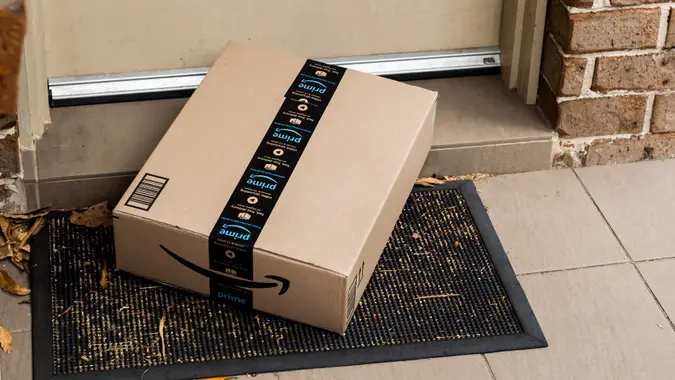What Social Media Can Tell You About Your Spending Habits (And How To Spend Less)

Commitment to Our Readers
GOBankingRates' editorial team is committed to bringing you unbiased reviews and information. We use data-driven methodologies to evaluate financial products and services - our reviews and ratings are not influenced by advertisers. You can read more about our editorial guidelines and our products and services review methodology.

20 Years
Helping You Live Richer

Reviewed
by Experts

Trusted by
Millions of Readers
It’s no surprise that social media can make you spend more, but you’re probably not aware of just how much that influence actually is.
“Your social media activity creates a direct window into your spending mindset,” said Kevin Shahnazari, founder and CEO of FinlyWealth.
“I regularly see this when analyzing user behavior on our platform — the brands you follow, the influencers you engage with and the shopping-related content you interact with shape your purchasing decisions in powerful ways.
“Through my work, I’ve observed that users who frequently engage with luxury brand content and shopping-focused influencers typically spend 30-40% more on discretionary purchases than those with limited exposure to such content.”
Below, experts explain what your social media use can tell you about your spending habits — as well as how to spend less.
Your Feed Influences What You Buy
“Social media can be surprisingly revealing when it comes to your spending habits,” said Andrew Gosselin, CPA, personal finance expert, and Senior Contributor at Coupon Mister.
He said it’s all there if you pay attention — ads you click, influencers you follow, and even the kind of content you engage with.
“Most people don’t realize how much their feed influences what they buy.”
He continued: “If your timeline is full of lifestyle accounts showcasing expensive gadgets or trendy clothes, it’s easy to feel like those things are necessities. Before you know it, you’ve got packages arriving every other day, and you’re not even sure how it happened.”
You’re Drawn to What You See Daily
“I worked with someone recently who realized they were buying workout gear almost every month because they followed a lot of fitness influencers,” said Gosselin.
They didn’t need half of it, he explained, “they were just drawn to what they saw daily.”
“The fix was simple: they unfollowed some of those accounts and started following creators focused on bodyweight exercises and fitness tips that didn’t push products. Their spending on gear dropped almost instantly,” Gosselin shared.
Shahnazari, for his part, observed this play out in his own life.
“I noticed my own spending habits shifted dramatically when I did a social media audit last year.”
He made changes including unfollowing accounts that pushed expensive products and followed financial education influencers instead. This simple change helped him save an additional $800 monthly by removing constant exposure to targeted advertising and aspirational lifestyle content.
“Social media platforms have become modern-day shopping catalogs, quietly shaping our spending choices through constant exposure to carefully curated lifestyle content and targeted advertisements.”
Your Activity Might Show Patterns You Weren’t Aware Of
If you’re liking posts about restaurants and food trends, Gosselin said there’s a good chance you’re eating out more than you thought.
He said one way to adjust is to set limits, like trying out just one new restaurant a month instead of going wherever looks good.
“You can also follow accounts that focus on meal prepping or recipes. It shifts your focus and encourages more affordable habits,” he added.
How Often Are You Clicking On Ads?
“Social platforms are built to show you things you’re likely to buy and those algorithms are good,” said Gosselin.
One way to counteract that, he explained, is to think before clicking.
“A client of mine started keeping a rule that they wouldn’t purchase anything from an ad unless they waited a week to see if they still wanted it. It cut down on impulse purchases by a lot.”
Social Media Also Makes You Spend Indirectly
What’s less obvious, according to Gosselin, is how often social media makes you spend indirectly.
For example, he said, “Maybe you see someone’s vacation photos and suddenly feel like you need a getaway, too. Or you notice a friend’s new tech and start thinking your phone or laptop isn’t good enough anymore.”
He said being mindful of these subtle nudges can help you stop and ask whether you’re making purchases for yourself or just trying to keep up with what you see.
Making Adjustments Isn’t About Cutting Yourself Off Completely
“It’s about being aware of how your online activity shapes your spending and making small changes that work for you,” Gosselin advised.
Whether it’s unfollowing certain accounts, setting spending rules, or simply taking a step back from the platform now and then, he said these shifts can make a big difference.
“Over time, you’ll notice that your spending feels more intentional, and that’s when you start saving without feeling like you’re missing out.”
 Written by
Written by  Edited by
Edited by 

























